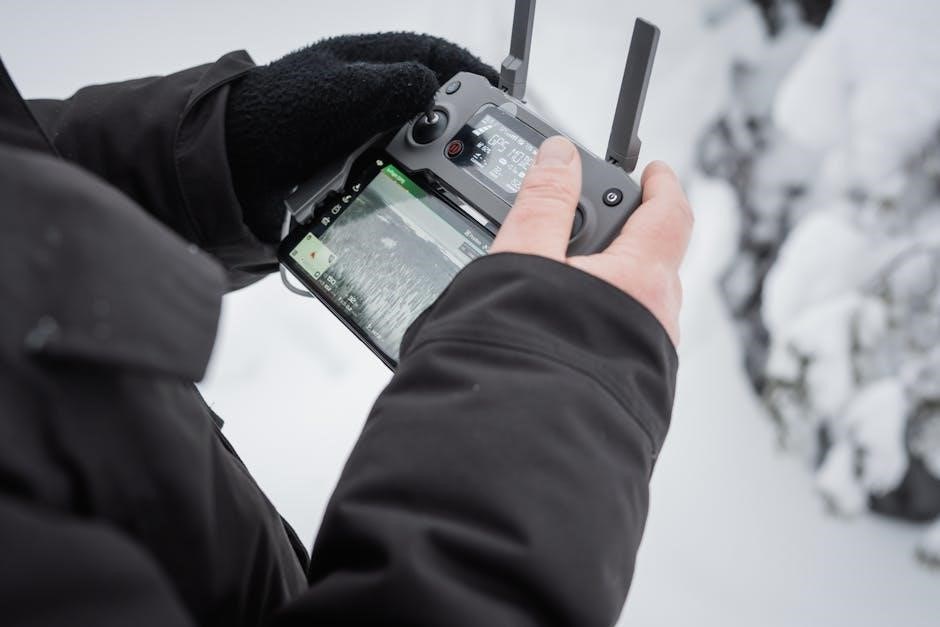The 2012 Chevrolet Equinox offers a blend of practicality and features‚ with readily available owner’s manuals and online resources for comprehensive vehicle understanding․
Digital access to the 2012 Equinox manual‚ including PDF and TXT formats‚ simplifies maintenance and troubleshooting for all owners․
Phillips Chevrolet provides demonstrations of the 2012 Equinox LT’s features‚ while Huawei’s 2012 lab focused on advanced technology research and development․
Overview of the Vehicle
The 2012 Chevrolet Equinox is a compact crossover SUV known for its comfortable ride and spacious interior․ Owners can access detailed information through readily available manuals‚ both in physical and digital formats like PDF and TXT․
These resources cover everything from basic operation to in-depth system explanations‚ aiding in vehicle maintenance and troubleshooting․ The Equinox FWD V6-3․0L model‚ highlighted in repair manuals‚ demonstrates its robust engineering․
Dealerships like Phillips Chevrolet offer feature demonstrations‚ while online platforms like ilovemanuals․com provide convenient manual downloads for a comprehensive ownership experience․
Importance of the Owner’s Manual
The 2012 Chevy Equinox owner’s manual is a vital resource‚ providing essential information for safe and efficient vehicle operation․ It details features‚ controls‚ and maintenance schedules‚ ensuring owners understand their vehicle’s capabilities․
Accessing the manual‚ whether in print or digitally as a PDF or TXT file‚ empowers owners to perform basic troubleshooting and preventative maintenance․
Understanding warning lights and system details – like the Tire Pressure Monitoring System reset procedure – is crucial․ Proper manual review maximizes vehicle longevity and enhances the overall ownership experience․

Understanding Your Vehicle’s Features
The 2012 Equinox boasts diverse features‚ detailed in the owner’s manual‚ from interior controls to exterior operations and comprehensive safety restraint systems․
Interior Features and Controls
The 2012 Chevy Equinox interior offers a comfortable and functional space․ The owner’s manual details operation of the climate control system‚ audio system‚ and power windows․ Understanding the placement and function of interior controls is crucial for a safe and enjoyable driving experience․
Features like the steering wheel-mounted controls allow for easy access to audio and phone functions․ The manual also explains the use of the information display and various interior lighting options․ Properly utilizing these features enhances convenience and personalization within the vehicle․
Familiarize yourself with the location of all interior controls to minimize distractions while driving and maximize your enjoyment of the Equinox’s interior amenities․
Exterior Features and Operation
The 2012 Chevy Equinox boasts several exterior features detailed in the owner’s manual․ This includes operation of the headlights‚ taillights‚ and windshield wipers․ Understanding the exterior lighting system is vital for visibility and safety‚ especially during inclement weather or nighttime driving․
The manual also explains the function of the exterior mirrors and the rear window defogger․ Proper adjustment of mirrors enhances awareness‚ while the defogger improves visibility in foggy or icy conditions․ Familiarize yourself with the operation of the power liftgate (if equipped) for convenient cargo access․
Regularly check the condition of exterior lights and ensure they are functioning correctly for optimal safety and compliance․
Seating and Safety Restraints
The 2012 Chevy Equinox owner’s manual provides crucial information regarding proper seating positions and safety restraint usage․ Understanding how to correctly adjust seats for optimal comfort and safety is paramount․ The manual details the operation of manual and power-adjustable seats‚ if equipped․
Detailed instructions are provided for the proper use of seat belts for all occupants‚ emphasizing the importance of correct positioning․ Information on child safety restraints‚ including LATCH system usage‚ is also included․ Always refer to the manual for specific guidelines regarding child seat installation․
Familiarize yourself with the airbag system and its limitations‚ as outlined in the manual․

Driving Your 2012 Chevy Equinox
The 2012 Equinox manual details starting‚ stopping procedures‚ and normal driving techniques․ It covers essential operations like parking brake use and proper gear selection for optimal performance․
Starting and Stopping the Engine
The 2012 Chevy Equinox owner’s manual provides detailed instructions for safely starting and stopping the engine․ Before starting‚ ensure the parking brake is engaged and the transmission is in Park (P)․ Insert the key or press the start button‚ holding it until the engine starts․
To stop the engine‚ gently apply the brake pedal and shift the transmission into Park (P)․ Then‚ turn the ignition key to the Lock/Off position or press the start/stop button․ Always allow the engine to idle briefly before shutting it off to ensure proper cooling and lubrication․ Refer to the manual for specific procedures and warnings․
Normal Driving Procedures
The 2012 Chevy Equinox owner’s manual details essential normal driving procedures for optimal performance and safety․ Accelerate smoothly‚ avoiding abrupt changes in speed․ Maintain a safe following distance and be aware of surrounding traffic conditions․
When turning‚ reduce speed and use appropriate signaling․ The manual emphasizes the importance of adhering to posted speed limits and traffic regulations․ Familiarize yourself with the vehicle’s handling characteristics and adjust your driving style accordingly․ Regular checks of mirrors and blind spots are crucial for safe operation․
Fueling and Fluid Checks
The 2012 Chevy Equinox owner’s manual provides detailed instructions for safe and efficient fueling procedures․ It specifies the recommended fuel grade and capacity․ Regular fluid checks are vital – including engine oil‚ coolant‚ brake fluid‚ power steering fluid‚ and windshield washer fluid – to ensure optimal vehicle performance․
The manual outlines the location of each fluid reservoir and the proper method for checking levels․ Maintaining correct fluid levels prevents damage and extends the life of your Equinox․ Consistent monitoring is key to preventative maintenance․

Maintenance and Care
The 2012 Equinox manual details scheduled maintenance‚ including fluid levels and tire pressure․ TPMS reset procedures are outlined‚ ensuring accurate monitoring for safe driving conditions․
Scheduled Maintenance
Regular maintenance is crucial for the longevity of your 2012 Chevy Equinox․ The owner’s manual provides a detailed schedule‚ outlining inspections and services at specific mileage intervals․
Essential checks include oil and filter changes‚ tire rotations‚ fluid level top-ups (coolant‚ brake fluid‚ power steering fluid‚ and windshield washer fluid)‚ and brake pad inspections․
Adhering to this schedule helps prevent costly repairs and ensures optimal performance․ The manual also specifies intervals for replacing components like air filters‚ fuel filters‚ and spark plugs‚ contributing to fuel efficiency and reliability․
Tire Pressure Monitoring System (TPMS) Reset
Resetting the TPMS on your 2012 Chevy Equinox is straightforward after tire inflation or rotation․ A video tutorial demonstrates a simple procedure: first‚ firmly apply the parking brake․
Next‚ turn the ignition to the ‘on’ position – do not start the engine․ Allow the system to recalibrate‚ recognizing the new tire pressures․
This process ensures accurate monitoring and alerts you to any significant pressure drops‚ enhancing safety and fuel efficiency․ Consult your owner’s manual for specific details and potential variations in the reset procedure․
Fluid Levels and Maintenance Schedule
Maintaining proper fluid levels is crucial for your 2012 Chevy Equinox’s longevity․ Regularly check engine oil‚ coolant‚ brake fluid‚ power steering fluid‚ and windshield washer fluid․
The owner’s manual details a comprehensive maintenance schedule‚ outlining intervals for oil changes‚ filter replacements‚ and other essential services․
Adhering to this schedule prevents premature wear and ensures optimal performance․ Scheduled maintenance‚ as outlined in the manual‚ contributes to vehicle reliability and resale value‚ safeguarding your investment․

In Case of Emergency
The 2012 Equinox manual provides vital emergency assistance information‚ including roadside assistance details and basic troubleshooting steps for unexpected issues․
Knowing these procedures ensures a swift response during critical situations‚ prioritizing safety and minimizing potential vehicle damage․
Emergency Assistance
Your 2012 Chevy Equinox owner’s manual details crucial emergency contact information‚ including OnStar services if equipped‚ and general roadside assistance programs available to you as a vehicle owner․ It emphasizes the importance of knowing your vehicle’s location when requesting help‚ utilizing GPS or landmarks for accurate reporting․
The manual also outlines procedures for handling common emergencies‚ such as a flat tire‚ dead battery‚ or running out of fuel․ It stresses prioritizing personal safety and the safety of passengers before attempting any repairs․ Familiarize yourself with these procedures to ensure a calm and effective response during stressful situations․
Remember to keep emergency contact numbers readily accessible within the vehicle‚ and consider a well-stocked emergency kit for added preparedness․
Roadside Assistance Information
The 2012 Chevy Equinox owner’s manual provides details regarding Chevrolet’s roadside assistance program‚ outlining services like towing‚ jump-starts‚ tire changes‚ and fuel delivery․ It specifies coverage terms and conditions‚ including any limitations or associated costs․ Understanding these details is crucial before relying on roadside assistance․
The manual will list contact numbers for accessing roadside assistance‚ potentially including toll-free numbers and online resources․ It may also detail procedures for submitting claims or requesting reimbursement for eligible expenses․ Keep this information readily available within your vehicle․
Consider supplementing Chevrolet’s program with a personal roadside assistance membership for enhanced coverage and benefits․
Basic Troubleshooting
The 2012 Chevy Equinox owner’s manual includes a section dedicated to basic troubleshooting‚ assisting owners in diagnosing and resolving common issues․ This section covers problems like a vehicle that won’t start‚ unusual noises‚ warning light illumination‚ and minor electrical malfunctions․
It provides step-by-step instructions for simple checks‚ such as verifying fluid levels‚ inspecting fuses‚ and resetting the tire pressure monitoring system (TPMS)․ The manual emphasizes safety precautions when performing these checks․
Remember‚ this section is for minor issues; complex problems require professional diagnosis and repair․

Detailed System Information
The 2012 Equinox manual provides in-depth details regarding the engine‚ transmission‚ and braking systems․ It outlines specifications and operational characteristics for informed maintenance․
Huawei’s 2012 lab similarly focused on detailed system analysis within their chip and compiler development processes․
Engine Specifications
The 2012 Chevy Equinox typically features a 2․4L four-cylinder engine producing around 182 horsepower and 172 lb-ft of torque‚ or an optional 3․0L V6 generating 265 horsepower and 222 lb-ft of torque․
The owner’s manual details these specifications‚ including compression ratios‚ firing order‚ and recommended fuel grade․ It also covers essential information regarding engine oil capacity and coolant type․
Like Huawei’s 2012 lab’s focus on chip instruction sets‚ understanding these engine details is crucial for optimal performance and longevity․ Proper maintenance‚ as outlined in the manual‚ ensures reliable operation․
Transmission Information
The 2012 Chevrolet Equinox generally comes equipped with a six-speed automatic transmission‚ designed for smooth shifting and efficient power delivery․ The owner’s manual provides detailed insights into its operation‚ including recommended fluid type and change intervals․
It also outlines procedures for checking transmission fluid levels and identifying potential issues․ Similar to the complex compilers developed at Huawei’s 2012 lab‚ the transmission’s internal workings are sophisticated․
Proper understanding and maintenance‚ guided by the manual‚ are vital for ensuring the transmission’s long-term reliability and performance․
Braking System Details
The 2012 Chevrolet Equinox features a robust braking system‚ incorporating front disc and rear drum brakes‚ often paired with an Anti-lock Braking System (ABS)․ The owner’s manual details the ABS functionality‚ explaining its role in maintaining steering control during emergency stops․
It also provides guidance on brake pad replacement intervals and fluid checks‚ crucial for optimal performance․ Like the meticulous simulations performed in Huawei’s 2012 labs‚ brake system testing is rigorous․
Regular inspection and maintenance‚ as outlined in the manual‚ are essential for safe and reliable braking․

Understanding the Dashboard Indicators
The 2012 Equinox owner’s manual thoroughly explains all dashboard lights‚ differentiating between warning and information indicators for quick issue identification and resolution․
Understanding these signals‚ like the Tire Pressure Monitoring System light‚ ensures proactive vehicle maintenance and safe operation․
Warning Lights
The 2012 Chevy Equinox utilizes a series of warning lights to alert drivers to potential issues․ The owner’s manual details each light’s meaning‚ ranging from critical engine malfunctions to low fluid levels․
Illuminated warning lights demand immediate attention; ignoring them could lead to further damage or unsafe driving conditions․
Common warning lights include the check engine light‚ oil pressure light‚ and brake system warning․ Consulting the manual provides specific troubleshooting steps or the need for professional service․
Promptly addressing these warnings ensures vehicle reliability and driver safety․
Information Lights
The 2012 Chevy Equinox employs information lights to convey operational status‚ not necessarily indicating a problem․ These lights provide feedback on systems actively in use․
Examples include lights for headlights‚ turn signals‚ and high beams‚ confirming their activation to the driver․ The manual clarifies the function of each informational indicator․
Unlike warning lights‚ information lights generally don’t require immediate action‚ but confirm system engagement․
Understanding these lights enhances driver awareness and vehicle operation․
Message Center Information
The 2012 Chevy Equinox’s message center displays vital vehicle information‚ ranging from routine maintenance reminders to system status updates․ The owner’s manual details interpreting these messages․
Messages can indicate low tire pressure‚ requiring TPMS reset procedures as outlined in the manual․ Other alerts may concern fluid levels or upcoming scheduled maintenance․
The message center also provides driver information‚ such as outside temperature and fuel economy readings․
Familiarizing yourself with the message center’s functions is crucial for proactive vehicle care․

Safety Features
The 2012 Equinox prioritizes occupant protection with features like an airbag system‚ stability control‚ and anti-lock brakes—detailed in the owner’s manual․
Understanding these systems is vital for safe operation and maximizing their effectiveness during driving conditions․
Airbag System
The 2012 Chevy Equinox is equipped with an advanced airbag system designed to provide crucial protection during collisions․ The owner’s manual details the locations of airbags – front‚ side‚ and curtain airbags – and explains their deployment characteristics․
It’s essential to understand that airbags deploy with significant force and can cause injury if occupants are not properly positioned or restrained․ The manual stresses the importance of always wearing seatbelts‚ as they work in conjunction with airbags to maximize safety․
Specific warnings regarding child safety seats and airbag deactivation are also outlined‚ emphasizing the potential risks and proper procedures for ensuring passenger safety․ Regular review of this section is highly recommended․
Stability Control System
The 2012 Chevrolet Equinox features a sophisticated Stability Control System (SCS)‚ detailed within the owner’s manual‚ designed to enhance vehicle control during challenging driving conditions․ This system helps prevent skidding and loss of control by selectively applying brakes to individual wheels․
The manual explains how the SCS interacts with the Anti-lock Braking System (ABS) and Traction Control System to maintain directional stability․ It also clarifies that the system is not a substitute for careful driving and may not prevent all accidents․
Understanding the SCS indicator light on the dashboard is crucial; the manual provides a clear explanation of its function and what it signifies when illuminated or flashing․
Anti-lock Braking System (ABS)
The 2012 Chevy Equinox is equipped with an Anti-lock Braking System (ABS)‚ thoroughly explained in the owner’s manual‚ designed to prevent wheel lockup during hard braking situations․ This allows the driver to maintain steering control while braking‚ potentially avoiding obstacles․
The manual details how ABS works in conjunction with the Stability Control System to maximize braking performance and vehicle stability․ It emphasizes that a pulsating sensation in the brake pedal is normal during ABS activation․
Owners should familiarize themselves with the ABS warning light and understand its implications‚ as outlined in the manual‚ to ensure proper system functionality and safety․

Warranty Information
The 2012 Equinox owner’s manual details comprehensive warranty coverage‚ outlining claim procedures and specifying covered components for peace of mind and vehicle protection․
Understanding the warranty terms is crucial‚ ensuring owners are aware of their rights and responsibilities regarding repairs and maintenance․
Warranty Coverage Details
The 2012 Chevrolet Equinox’s warranty‚ as detailed in the owner’s manual‚ typically includes a bumper-to-bumper coverage for 3 years/36‚000 miles‚ protecting against defects in materials or workmanship․
Powertrain coverage extends to 5 years/100‚000 miles‚ safeguarding the engine‚ transmission‚ and drive axles․ Corrosion protection is also included‚ varying by region․
Specific exclusions apply‚ such as wear-and-tear items and damage from misuse․ Owners should carefully review the manual for complete details and limitations of coverage;
Proper maintenance‚ as outlined in the manual‚ is essential to maintain warranty validity․
Warranty Claim Procedures
To initiate a warranty claim for your 2012 Chevy Equinox‚ consult the owner’s manual for authorized Chevrolet dealerships in your area․ Contacting a dealership is the first step‚ explaining the issue and providing vehicle identification details․
The dealership will diagnose the problem and determine if it’s covered under warranty․ Documentation‚ including repair orders and records‚ is crucial․
Chevrolet may require pre-authorization for certain repairs․ Following the outlined procedures ensures a smooth claim process‚ and the manual details contact information for Chevrolet customer assistance․

Additional Resources
Chevrolet provides extensive support‚ including online manual access via ilovemanuals․com and direct contact options for inquiries regarding your 2012 Equinox․
Phillips Chevrolet offers sales assistance‚ while Operation CHARM provides repair manuals for all vehicle owners seeking detailed guidance․
Where to Find More Information
Owners seeking detailed information about their 2012 Chevy Equinox can explore several valuable resources․ Ilovemanuals․com offers downloadable owner’s manuals in convenient PDF and TXT formats‚ providing comprehensive guidance on vehicle operation and maintenance․
Phillips Chevrolet’s website (phillipschevy․com) and direct contact via phone (866-488-3323) provide access to sales consultants knowledgeable about the Equinox․ Operation CHARM is a platform dedicated to car repair manuals‚ offering diagnostic and repair information․
Furthermore‚ Chevrolet’s official website provides support and resources‚ ensuring owners have access to the information needed to maximize their vehicle ownership experience․
Contacting Chevrolet
For direct assistance regarding your 2012 Chevy Equinox‚ reaching out to Chevrolet is straightforward․ Phillips Chevrolet offers a dedicated point of contact through Barry Johnson‚ a sales consultant reachable at (866) 488-3323 and via their website‚ phillipschevy․com․
Chevrolet’s official customer service channels provide comprehensive support for owners’ inquiries‚ warranty claims‚ and general vehicle information․ While specific contact details aren’t explicitly provided in the sourced text‚ exploring the Chevrolet website will yield current contact options․
Utilizing these resources ensures owners can efficiently address any concerns or questions related to their 2012 Equinox․
Online Manual Access
Accessing your 2012 Chevrolet Equinox owner’s manual online is remarkably convenient․ ilovemanuals․com provides a downloadable version‚ offering a readily available resource for vehicle information․ The manual is available in formats like PDF and TXT‚ catering to diverse user preferences․
Operation CHARM‚ a platform for car repair manuals‚ also lists resources for the 2012 Equinox‚ including repair and diagnosis information․ Downloading a ․zip file provides offline access to these valuable resources‚ ensuring accessibility even without an internet connection․
These online platforms streamline access to crucial vehicle documentation․


























































